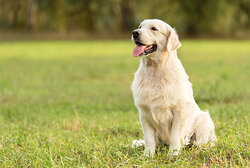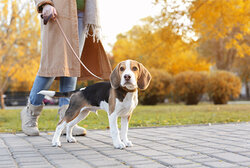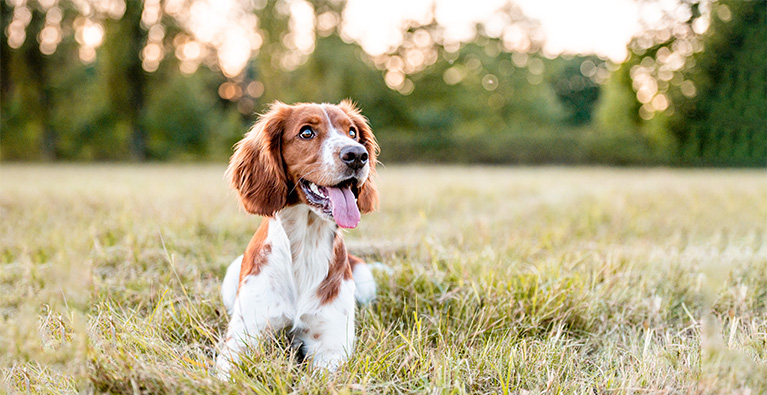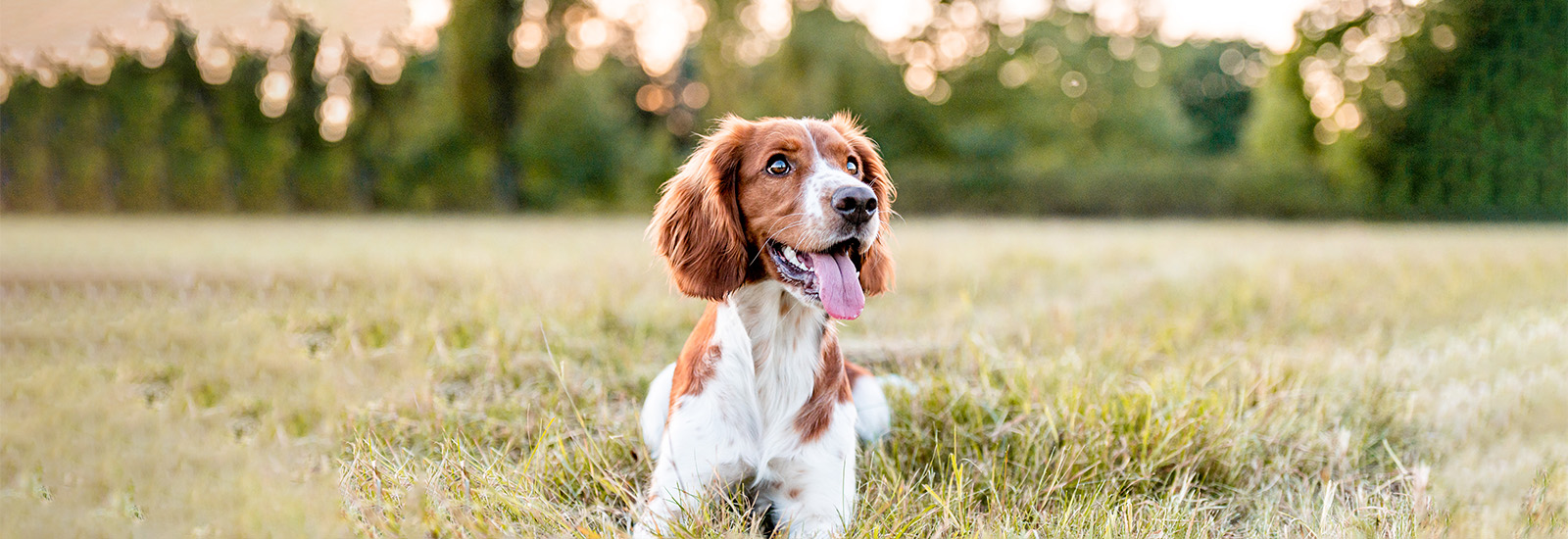Teaching a dog the command “Down”
“Down” is one of the most important commands a dog should master. The easiest way for it to learn this command is from the “Sit!” position. With the help of a treat, you will be able to get your pet to lie down. We will show you how to teach your dog this command step by step.
Why do I need the command “Down”?
“Down” is a command that you will often find very helpful in everyday life. In a restaurant, for example, people respond very well to a dog lying obediently under the table. It is also appreciated by other passengers on a train or bus. Also in hotels, at events, at the dog training ground, when you have visitors or when an over-excited dog simply needs to calm down, it is very helpful if a dog responds to the command “Down”.
Practising “Down” with puppies
If you have a puppy, “Down” should be one of the first commands you teach it. Please keep in mind, however, that young dogs have a very short span of attention. You should simply accept this and play a game with your dog before starting another short training session. Avoid making the sessions as long and intense as possible, and instead practice several times throughout the day. An ideal time is when the puppy has eaten after a nap, has loosened up a bit, and has had the chance to work off some of its energy.
How can I teach my dog the command “Down”?
A dog must be able to understand what you want it to do. For this reason, each command should be broken down into meaningful individual steps. If your dog does not respond correctly straight away, you should not assume that it is doing this on purpose. Instead, consider how you can make it even easier for your pet to understand.
For the command “Down”, it is best to proceed as follows:
- Have treats ready
Have a bag of tasty treats ready. For most dogs, they serve as an ideal motivator. This is why you should give them to your dog as rarely as possible without any specific reason or because your pet happens to be bored at that particular moment. Make the most of opportunities to use the treats effectively during short training sessions. For training, make sure that the treats are ones that your dog is particularly fond of, because this should keep its attention at a high level. You should, however, remember not to give your pet too many treats. If it receives a very generous amount, this should be accounted for in its daily food allowance.
- Choosing the right time and place
Dogs are easily distracted, especially when it comes to a puppy or very young dog. When practising a new command, the environment should therefore be as stimulus-free as possible. The ideal place is your own home, a quiet garden or a secluded spot in a park or in the countryside. It is an advantage if the dog has already had the chance to loosen up a bit and let off steam, but is not yet worn out. This is a good time to get its attention and start the training.
- Start with the command “Sit”
It is a great advantage if the dog already understands and has mastered the command “Sit”. This is because from a standing position, the dog would probably simply lower its head when you take a treat and move it towards the ground in front of it. Therefore, when you start the training session, get your dog to follow the command “Sit” so that its bottom is already on the ground.
- Following the command “Down!” from the “Sit” position
When your dog is sitting down, do not release it from the command, but hold a treat between your fingers and stand or kneel relatively close in front of your pet. Hold the treat right in front of its nose and then move it down to the ground between its front legs. Some dogs will then stand up, but most of them will bend their front legs and lie down. At this moment the dog should be given the treat and at the same time the verbal command “Down!”. It will thus learn to associate its body position with the command.
Dogs are very attentive, so you should also teach them to associate a visual signal with the command “Down” right from the start. Many dog owners hold the palm of their hand horizontally and move it downwards. The advantage of a visual signal is that it can be given over long distances without having to say anything. It should also be kept in mind that some dogs are no longer able to hear well at an advanced age.
- Keep practising and slowly increase the requirements
If the command “Down!” does not work straight away, there is no need to worry. Think about how you can improve your training sessions. Are you training your dog at the wrong time, are there too many distractions, is your dog perhaps not enjoying the treats, or is it you? You should radiate calmness and confidence and not move your hand with the treat too quickly. And always be patient (especially with puppies).
Practice daily – and as soon as you have made progress, you can start to increase the challenge. For example, give the command without a treat in your hand, no longer kneel directly in front of your dog and do not let it get up again after just a few seconds. Give the command from a distance and practise it while you are out with your dog and there are lots of distractions.
- Do not forget the release command
The first few times, you are bound to simply be happy if your dog does what it is supposed to do when you give the “Down!” command, which is to lie down. You should then praise your pet and give it a treat. Soon, however, you should also include a release command, such as “OK”. The dog will then know that it has been “released” from the command. At first, this can be after just a couple of seconds, but later, in a restaurant, it will need to be given only after an extended period of time. You should therefore never forget to release your pet from every command.
Video about the command “Down”
Would you like to see the use of the command “Down” on video? Animal trainer Fränzi Lüttich demonstrates how it works with Weimaraner Sky and dachshund Polly:
You may also like this

Teaching your dog to sit
How to teach your dog to sit

Teaching your dog the command "Stay"
How to practice the command "Stay" with your dog

Lead training
We show you how you can train to walk properly on a lead

When a dog is afraid of the vet
Fear of the vet can have many reasons





